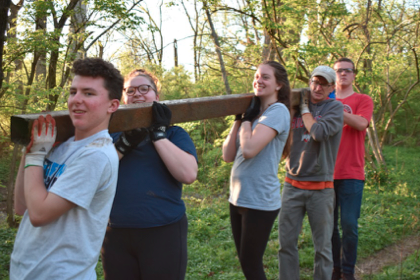2019, CINCINNATI, OH, UNITED STATES

Every year 66 million tons of salt are used worldwide to melt ice off of roadways for human use. This salt is contaminating waterways, groundwater, harming animals and aquatic life, and causing stress on flora and fauna. Thus, Sophia and Olivia Dick embarked on a journey to turn to find natural ingredients that would have the same effects as road salt, only with less impact on the environment.
The mixture that they came up with only contains alfalfa meal and used coffee grounds, which naturally lowers the freezing point off water while simultaneously providing traction just like salt. When winter is over, the mixture acts as a natural fertilizer for plants and grass as well. Sophia and Olivia were able to involve their community in creating their ice melt alternative, purchasing their alfalfa meal from a local feed shop and receiving coffee grounds for free from their local coffee shop.
To use their concoction, snow should be cleared off first before dispensing the melt using a kitchen strainer or cup. Sophia and Olivia set up booths throughout their community where they gave out bags of their natural ice melt for free. They made it clear that they intend their project to be used residentially, and if it goes well to potentially be used within their city’s roadways. To encourage their community to make their own ice melt when the original bag runs out, the “recipe” was attached – 3 parts alfalfa for every 2 parts of coffee grounds.











